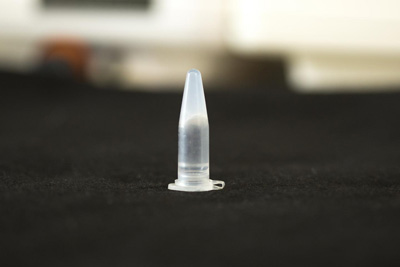Injectible gel could be used to treat critical limb ischemia
Posted: 9 March 2016 | Victoria White | No comments yet
Critical limb ischemia causes extremely poor circulation in the limbs and leads to an estimated 230,000 amputations every year in North America and Europe…

Scientists have developed a potential new therapy for critical limb ischemia.
Critical limb ischemia is a condition that causes extremely poor circulation in the limbs and leads to an estimated 230,000 amputations every year in North America and Europe alone to prevent the spread of infection and tissue death. The new therapy could prevent or limit amputations for a condition that affects more than 27 million people and is a manifestation of advanced peripheral arterial disease.
The therapy consists of injecting in the affected area a gel derived from the natural scaffolding, or extracellular matrix, in skeletal muscle tissue. The team, from University of California, San Diego, tested the procedure in a rat model of the disease and found that it promotes muscle remodelling and improves blood flow.
“This is a unique approach that not only helps repair the damaged vascular system, but also helps restore muscle tissue,” said Karen Christman, a professor of bioengineering at the Jacobs School of Engineering and the Sanford Consortium for Regenerative Medicine at UC San Diego.
“Avoiding or limiting extent of amputations is a huge benefit for patients,” added Dr Ehtisham Mahmud, chief of cardiovascular medicine at the Sulpizio Cardiovascular Cenre at UC San Diego.
Christman and Mahmud partnered to make sure the study’s design would eventually help patients when the therapy was ready for the clinic – a step that should take about two years.
The hydrogel increased the diameter of rats’ arterioles, improving blood flow in the limbs
As far as the researchers know, no one had tried to use an injectable material by itself to treat both the low blood flow and weakened skeletal muscle in critical limb ischemia.
Christman’s team had already shown that injection of a gel derived from cardiac muscle tissue extracted from pigs could help repair the heart after a heart attack. The tissue is stripped of cells, leaving behind a scaffold of the extracellular matrix from cardiac muscle, which acts a regenerative environment where cells can grow again.
Using this same concept, Christman and her team now are turning their attention to peripheral artery disease and critical limb ischemia. They developed a material that was derived from the skeletal muscle of pigs to treat damaged skeletal muscle in these patients. Researchers injected the gel into the affected area in a rat model of the disease seven days post-surgery and monitored blood flow in the rats’ limbs up to 35 days after injection.
Researchers found that the hydrogel increased the diameter of the rats’ arterioles. The increased diameter led to improved blood flow in the limbs. By day 35, the size and structure of muscle fibres in the rats treated with the hydrogel was comparable to that in healthy rats.
The gel, which forms a fibrous scaffold upon injection, also attracted muscle stem cells to the affected area. Gene expression analysis showed that inflammatory response and cell death decreased while blood vessel and muscle development pathways increased in rats injected with the gel.
Next steps include looking at other disease models in animals and refining preclinical safety protocols and quality control for manufacturing.
Related organisations
UC San Diego


